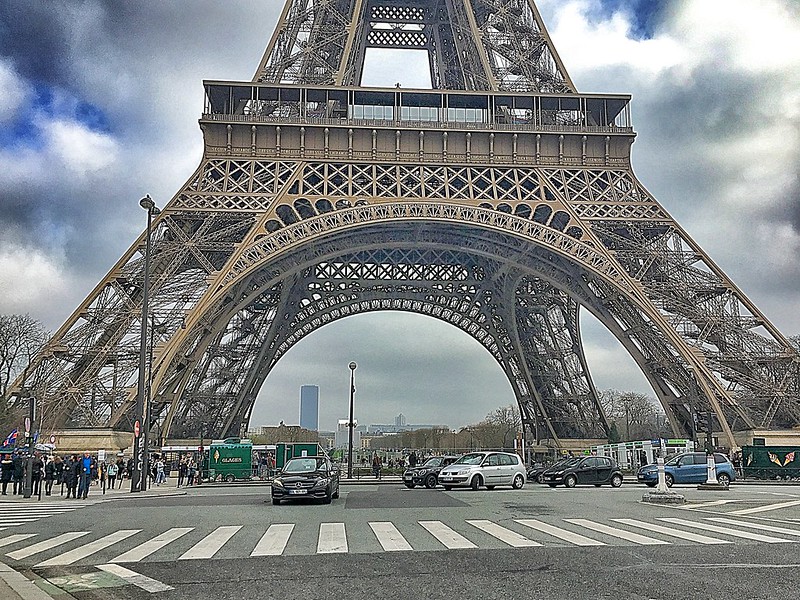Today in 1889, the formal opening and dedication of the Eiffel Tower in Paris.
What a strange life it’s had: originally meant to stand for just 20 years, saved because of its usefulness as a radio tower, and then there was a proposal to add two huge car ramps to the sides of the thing.
French engineer André Basdevant suggested these additions in the mid 1930s.
Cars and car culture were huge at the time; people wanted to be able to drive all over, and city planners were trying to make older cities like Paris more car-friendly.
This idea would have added two large coiled car ramps to the second floor of the tower.
People who wanted to dine up there wouldn’t have to wait with the huge crowds of tourists at the elevators, they could instead drive up the first ramp, and then down the second one when they were finished.
There isn’t a lot of information available about this proposal, which suggests it didn’t go anywhere beyond the suggestion stage.
For one thing, it would have been a huge construction project that probably would’ve required a lot of closures.
That’s never ideal for a big tourist attraction, especially for an add-on that, to a lot of people, would have looked like a weird concrete necklace for the tower.
Plus, the second floor of the Eiffel Tower is hundreds of feet off the ground: drivers would have had to go through like ten loops on the ramp to get up there or back down.
And what about the people who go to the second floor restaurant to hang out and enjoy views of the city while sharing a bottle of wine, or three?
Do people really want them driving down a complicated loopy ramp after that?
It’s probably just as well that the idea didn’t get off the ground, because a lot of cities today are looking for fewer cars in their tourist districts and near their major attractions.
For his part, André Basdevant moved on from his unsuccessful Eiffel Tower project to an even bigger idea: according to the site World Enough, he wanted to build an enormous airstrip over the River Seine, one that was held up on top of huge towers.
Oh, and also the airstrip would rotate.
That idea makes a drive-through Eiffel Tower seem kind of small scale, doesn’t it?
The Eiffel Tower gets a fresh coat of paint about every seven years – but it hasn’t always been repainted the same color.
At various times it’s been “ochre brown,” “Venetian red,” “brownish red” and “reddish-brown.”
The color in use now is called “Eiffel Tower Brown,” though actually different parts of the tower are shaded differently; that makes the color look uniform against the Paris sky.
But what color would they have painted the drive-thru ramps?
1936 Crazy Project to Make the Second Floor of the Eiffel Tower Accessible by Car (Vintage Everyday)
Painting the Eiffel Tower (Tour Eiffel Paris)

